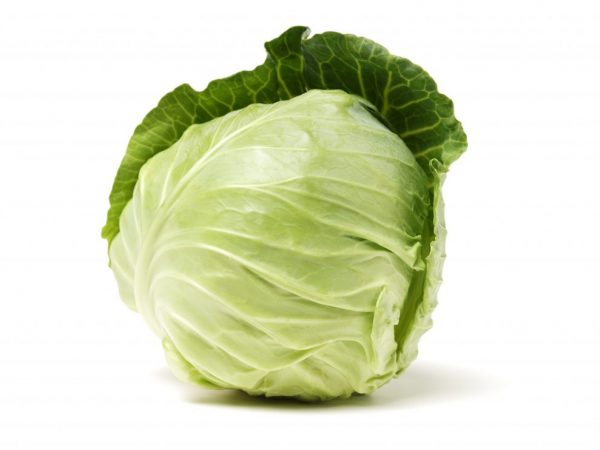Cultivation of cabbage Menzania
Cabbage Menzania belongs to the hybrid crops of the first generation. Its main advantages are unpretentiousness in care, a good harvest and a pleasant taste of ripe fruits.

Cultivation of cabbage Menzania
Main characteristics
Menzania is suitable for growing in all regions of the country, since it is not afraid of cold snaps or high temperatures. Begins to bear fruit 110 days after landing in a permanent place. The height of the bush is 30-40 cm. The stump, located on the outside, is characterized by medium size.
Among the characteristics of the fetus are:
- high density of the head of cabbage;
- rounded shape with small flattened areas along the edges;
- creamy color inside the fruit;
- gray, with slight admixtures of green on the outside of the head of cabbage;
- average weight - 3 kg.
The taste of culture is pleasant and sweet. The composition of cabbage contains amino acids and chemicals that have a positive effect on human well-being. This type is used fresh, it is suitable for fermentation. It is characterized by low shelf life. Even if you adhere to all storage recommendations, the terms do not exceed 2 months.
Growing principle
According to the description, Menzania cabbage is planted using seedlings. They buy high-quality seeds and soak them in a manganese solution (2 g per 5 l of water) for disinfection. Then, at a distance of 2 cm from each other, the seeds are planted in a container. The planting depth should be 1 cm. The containers are placed in a warm, poorly lit place with a daytime temperature of 22 ° C-25 ° C and a night temperature of 15 ° C-17 ° C. As soon as 4 leaves are formed on the seedlings, it is transplanted to a permanent place.
Planting culture is carried out in well-lit areas. The composition of the soil should be fertile, with a low acid and alkali content (up to 4%).
Planting is carried out in early April, when the likelihood of frost decreases. During planting, keep the distance between the bushes in order to increase the ability of the plant to develop in height, width and root system. A distance of 50 cm is kept between the rows, and a distance of 70 cm between the holes. To improve development, it is allowed to add nutrients to the soil before planting (2 kg of humus and 1 kg of peat per 1 sq. M).
Care

Cabbage does not like drought
The optimal watering interval is 7 days. When growing crops in the northern or central regions, such an interval is permissible. If cultivation is carried out in the southern parts of the country, watering should be carried out at intervals of 3 days. White cabbage of this variety does not tolerate drought. It is best to water the plant in the evening so that water does not evaporate from the soil.
Top dressing is carried out several times during the process of plant and fruit formation. 12 days after planting, the plant is watered with a potassium nitrate solution (20 g per 10 l of water). To reduce the likelihood of burns on the bushes, such treatment is carried out 5 hours after watering.
The second stage of fertilization involves the introduction of the same solution, only the amount of potassium nitrate is doubled.
If the leaves of white cabbage have begun to turn yellow, watering is carried out with a solution of organic fertilizers (500 g of humus and 100 g of peat per 10 liters of water). A few weeks before harvesting, the bushes are treated with a complex solution (20 g of potassium nitrate, 30 g of superphosphate and 10 g of ammonium nitrate per 10 liters of water).
The need for cabbage in a clean area is noted, therefore, with an interval of 2-3 days, the top layer of the soil is loosened to remove the crust, and weeds that can cause pests are removed.
Diseases and pests
An effective remedy against aphids and fleas is a solution of the drug "Oxyhom" (30 g per 10 liters of water). To fight against the caterpillar is really a tincture of tomato tops (2 kg of tops are poured with 10 liters of water and insisted for a day). A solution of colloidal salt (20 g per 10 L of water) helps against worms, slugs and flea beetles. As a prophylaxis against pests, crops are planted near sage, rosemary and mint.
It is impossible to get rid of the keel, you have to remove the entire infected bush, and treat the soil with a solution of lime (2 kg of lime per 10 liters of water).
The solution of the drug "Tiram" (5 g per 10 liters of water) allows you to fight the black leg. They get rid of downy mildew with the help of the preparations "Tiram" or "Planrizom". It is required to dilute 10 g of each substance in 10 liters of water and spray the area.
Conclusion
Menzania of category f1 refers to medium late and high yielding varieties. If you adhere to all the rules for care and cultivation, then about 500 kg of high quality products are harvested from 1 hectare.

